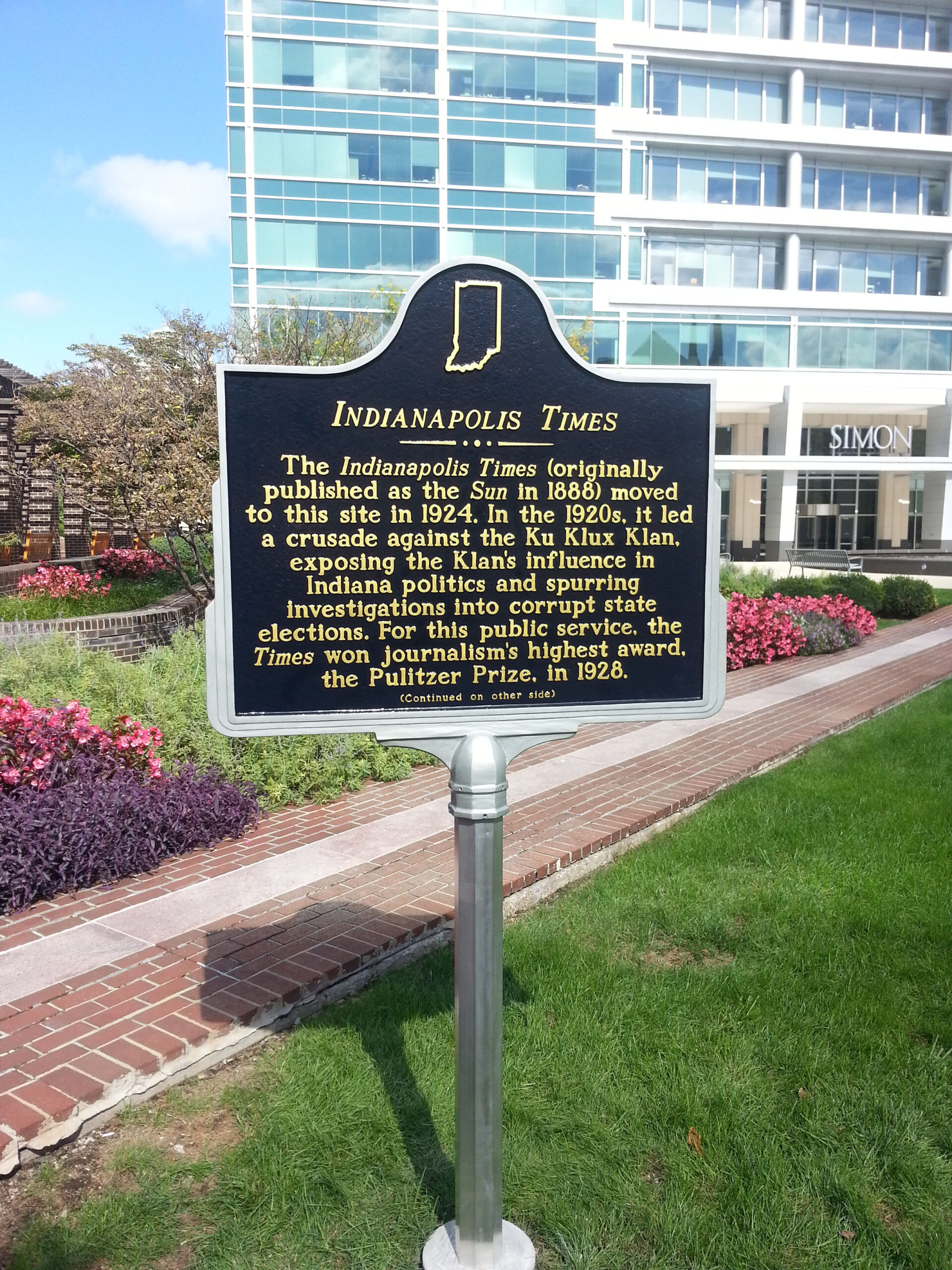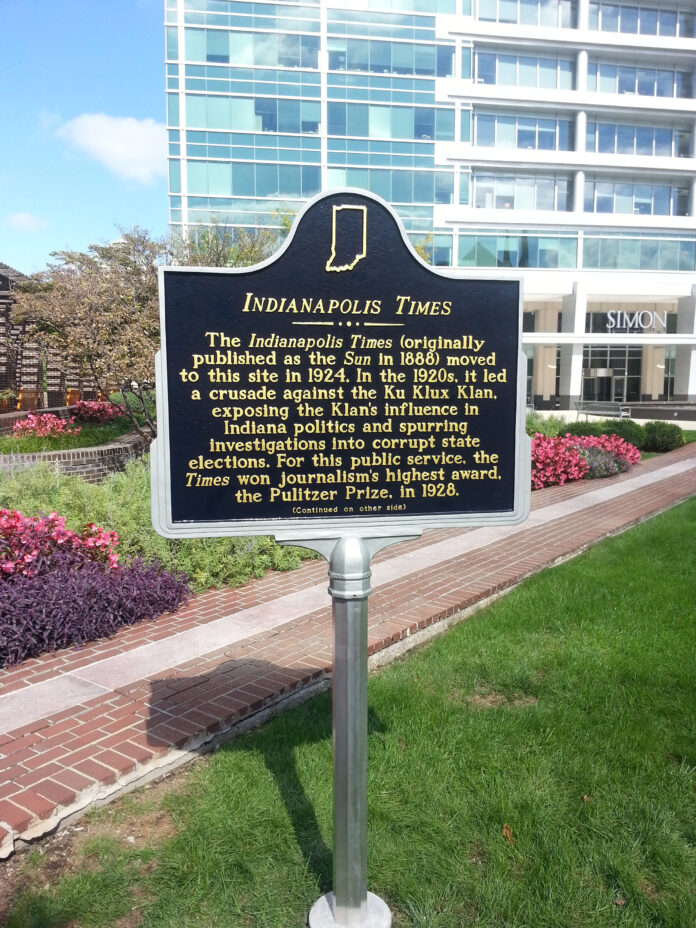
A historical marker honoring an Indiana newspaper that won a Pulitzer Prize for exposing the Ku Klux Klan has been replaced and re-dedicated to the paper.
The HSPA Foundation Board of Directors granted $1,000 to replace the damaged historical marker commemorating the Indianapolis Times.
The marker is located in the green space just east of the Westin Hotel between Maryland and Washington streets.
“It seemed a small price to pay to allow citizens of Indiana to learn about the role an Indiana newspaper played in making our state a better place to live,” said Karen T. Braeckel, HSPA Foundation director.
More than a history lesson, the marker displays the Times’ role as a watchdog of government.
The newspaper won a Pulitzer Prize in 1928 for exposing the Ku Klux Klan, received a national award for its work on behalf of the mentally ill in 1955, and exposed state highway scandals in the 1950s and errors in crime statistics in 1962.
It stopped publishing in 1965 after 77 years of service to the state.
Former staff members of the Indianapolis Times were scheduled to attend a dedication ceremony for the new historical marker.
The fixture reads:
“The Indianapolis Times (originally published as the Sun in 1888) moved to this site in 1924. In the 1920s, it led a crusade against the Ku Klux Klan, exposing the Klan’s influence in Indiana politics and spurring investigations into corrupt state elections.
“For this public service, the Times won journalism’s highest award, the Pulitzer Prize, in 1928. Times advocated for the benefit of the public: organized Clothe-A-Child campaign during the Great Depression; won national award for its work on behalf of the mentally ill (1955); and identified jobs for the unemployed (1961). Exposed state highway scandals (1950s) and errors in crime statistics (1962), leading to better police patrol. Ceased publication in 1965.”
State historical markers commemorate significant individuals, organizations, places and events in Indiana history. The markers are designed to help communities promote, preserve and present their history.
For more than 95 years the Indiana Historical Bureau, an agency of the state of Indiana, has been marking Indiana history. There are about 500 markers across the state.




